A walk in the history of Manduria to meet the Messapians, a proud and rich people. Let’s follow their footprints in the Archeological Park of Manduria.
Let’s continue our walk in the history of Manduria and
the Messapians and restart exactly where we stopped.
The cemetery nucleus
In the park there are many cemetery nuclei, but Anna
shows us the one that perhaps is the most articulate and varied that we can
see.
We balance among the graves dug in the rock, one next
to the other, in no particular order. They have different dimensions and date back different periods. Some of them are small and make us
think that there could be young little corpses inside, but it seems that we’re wrong.
Actually, the Messapians dedicated to children another funeral ritual: they
were placed in a vessel and buried near the parents’ house. So, who was in
these little graves?
Most likely, adults were here, buried in a fetal
position. Anna gives us two explanations for this custom: the first, a bit
philosophic, where the deceased was welcomed back in Mother Earth’s womb after
death; the practical explanation, instead, is linked with less advanced
excavation techniques. Actually, this kind of grave is archaic.
The more we go ahead in time the bigger and more
regular the graves become: some of them are even plastered and still there are
traces of paint. In the more recent of them there’s a nook inside: they’re
family graves and this added little environment was an ossuary for the
deceased that previously occupied the
grave.
The deceased made his/her journey to the afterlife
with grave goods. Thanks to these objects, today we can understand who s/he was and
his/her social position. And that’s the most interesting part.
In the graves of some women, they found a particular
vase, the trozzella, a Messapian element, linked with water worship and
exclusively feminine. They discovered that just those who were high-ranking
women owned this vase, just those with an important position in the community.
This discovery, together with what we’ve learned in front of the Plinian Fount,
says that the Messapian society was matriarchal.
Walking in the Archeological Park doesn’t just mean to
go through a place where someone found some evidences, but it’s a true journey
in history and it’s like if we know the Messapians a little more, like if we
know something more about their culture, their wealth and pride in their way of
defending themselves, careful and strategic, and in their respectful care for
their deceased.
San Pietro Mandurino
Now we leave the Walls to visit another place, always
in the Park, that mixes history with legend: the church of San Pietro
Mandurino.
Before entering and discovering this little church
framed in the countryside of Manduria, we stop a moment to listen to a story.
They tell that in 44 AD, Saint Peter arrived in Manduria by sea and met King
Fellone, who was seriously ill. The Apostle baptized him in river Chidro and
the king healed. From there, Saint Peter started his work of evangelization and
put the first stone of this little church.
We don’t know how true this story is, but now we
proceed with the discovery of this legendary building. It’s composed of three
elements of different periods and we are going to pass through them. Let’s go
in.
The building from which we enter it’s the most recent.
It dates back the 12th century and there are two small environments,
one with a fake-trullo-vault ceiling (fake because they used mortar to keep the
blocks together, on the contrary a true trullo has a self –supporting
structure); the other has a barrel-vault ceiling.
The frescos of Saint Peter in the apse and of Saint
Rosalia on the adjacent wall welcome us. We don’t stay long because Anna
invites us to descend some stairs carved into the rock to access in the
underground environments beneath the church. She guides us toward a door, in a
room, the most ancient part of the complex.
We’re in the 4th-3rd BC century,
in an underground burial chamber. On the walls there are the frescos of the
nativity, of the magi on horseback (yes, horses and not camels, as Renaissance
art shows us the three kings). Next to the door, there are Jeremiah and Isaiah,
who prophesied Jesus’ birth. Painting them, they put the Old and the New
Testament together in one room.
All the characters of the story told on this wall are
Byzantine; the only element that reminds us that we are in the Messapian land
are the purplish beams painted on the ceiling.
Manduria, which, as we saw, had a flourish network of
commercial contacts, allied with Taranto and Brindisi and
Romans couldn’t tolerate such an affront.
The decline of the Messapians began in that moment and
Manduria suffered a sort of damnation memoriae until it even disappeared from
the pages of history. In 1090, Ruggero I of Altavilla brough it to light again
with the name of Casalnuovo. Finally, in 1789 the town had again its Messapian
name with Ferdinand IV of Bourbon.
We cross the door, which once was closed and
represented the division between the world of the living and the one of the
dead, and we are in a underground church of the 8th century AD.
In Byzantine churches, we count the aisles from east
to west. So, here we haven’t 5 aisles divided by carved columns, but 2 with the
respective apses, an unusual feature even for a Byzantine underground church.
In an apse there is the Descent from the
Cross; in the other there’s Saint Anthony with a pig on a leash.
On the other walls, in every alcove, there’s the
fresco of a Christian saint that, still with incredibly vivid colors, tells how
the discovery of faith charged his or her life. Many of them are long-bearded,
wear humble clothes and are dove in natural and solitary places where they live
their hermits life.
There are also local saints, like Saint Sofronia, who
lived on San Pietro Island, in front of Taranto, and after death the nature
took care of her corpse. It seems to do it still nowadays, with a little gecko still
in correspondence with the ear of the saint, as it was an earring.
We are at the end of our journey in the history of the
Messapians, a journey begun and ended in the bowels of the earth, at the
beginning in a sacred and pagan place, then surrounded by Christian holiness.
I thank Anna and Cooperativa Spirito Salentino for
having guided me and made me discover how rich Messapian civilization was and
the beauty of the Archeological Park, with its history and its mysteries.
If you want to know the Park and to have information
about how to book a guided visit, you can visit directly the website of the
Archeological Park.

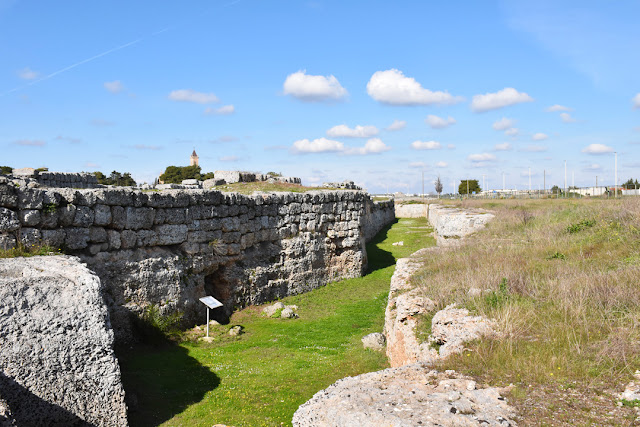
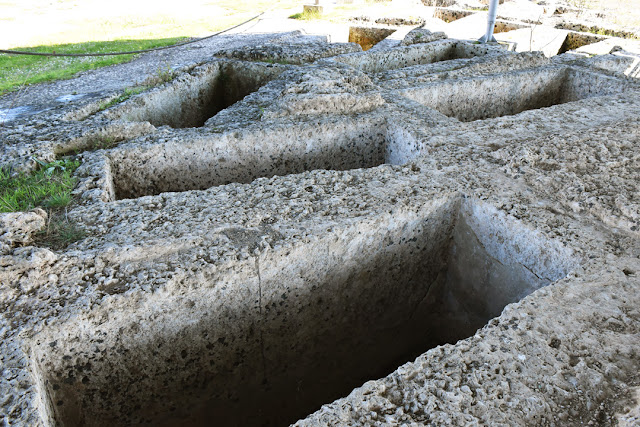
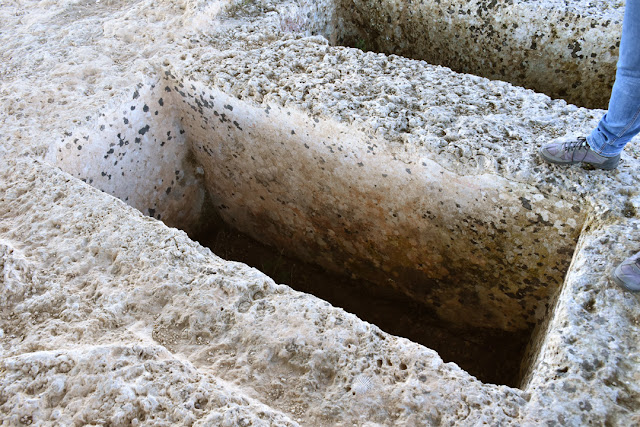
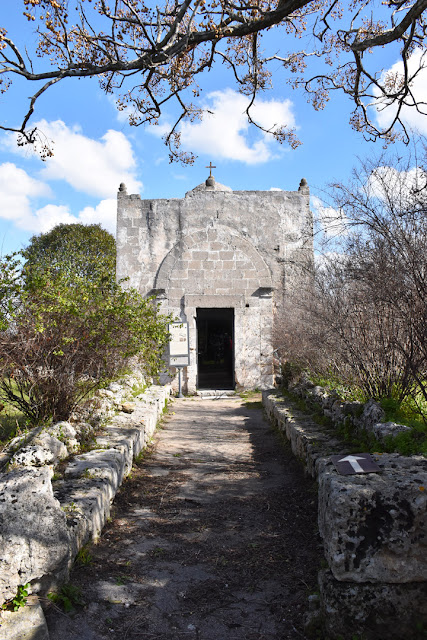
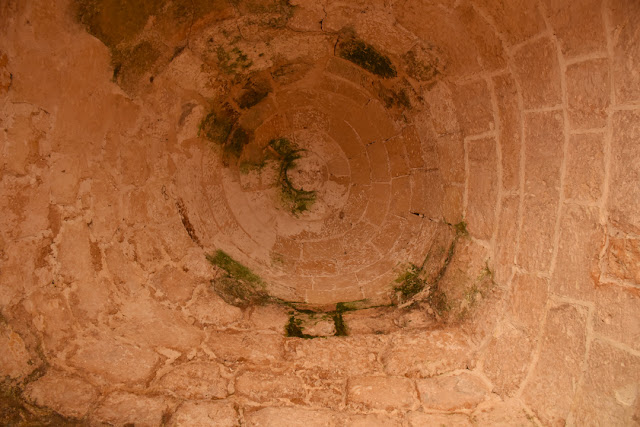
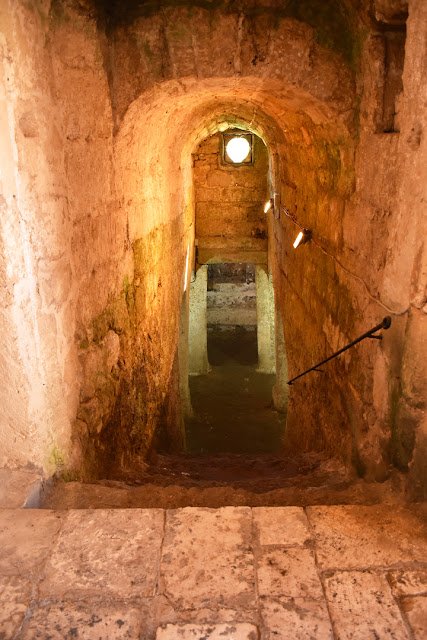
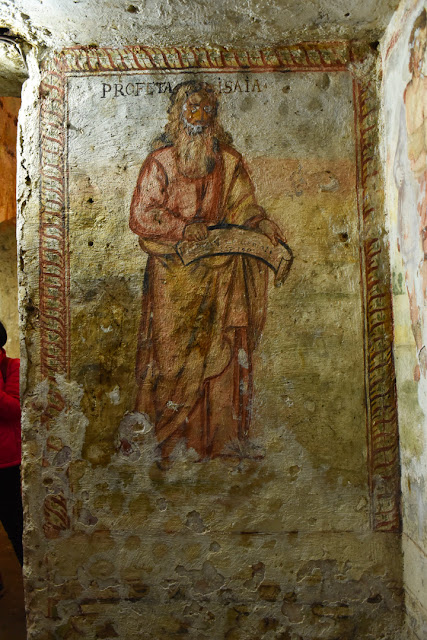
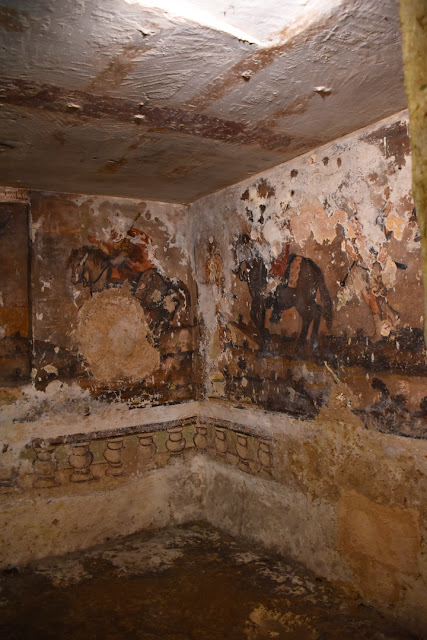



Commenti
Posta un commento
Feel free to leave a comment!
I would be glad to know your opinion! ;)
Thank you! :)